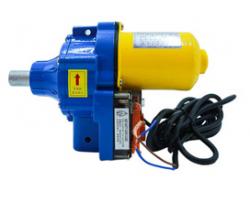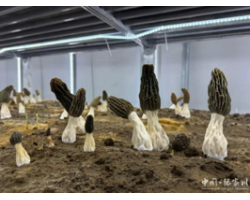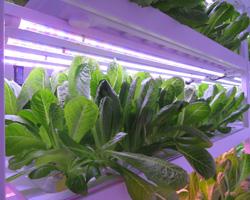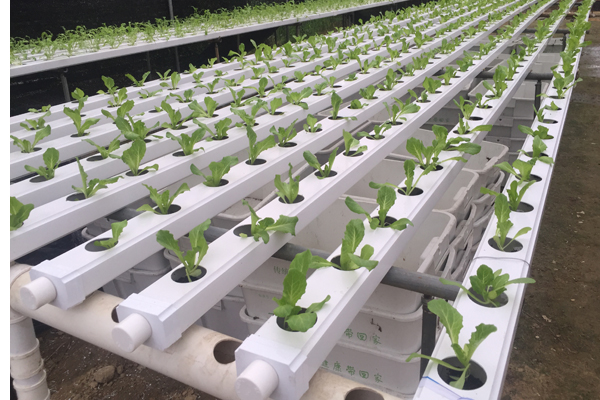Hydroponics
Hydroponics
Via:http://12.000.scripts.mit.edu/mission2014/solutions/hydroponics while picture is from Noonty Greenhouse www.chinanoonty.com
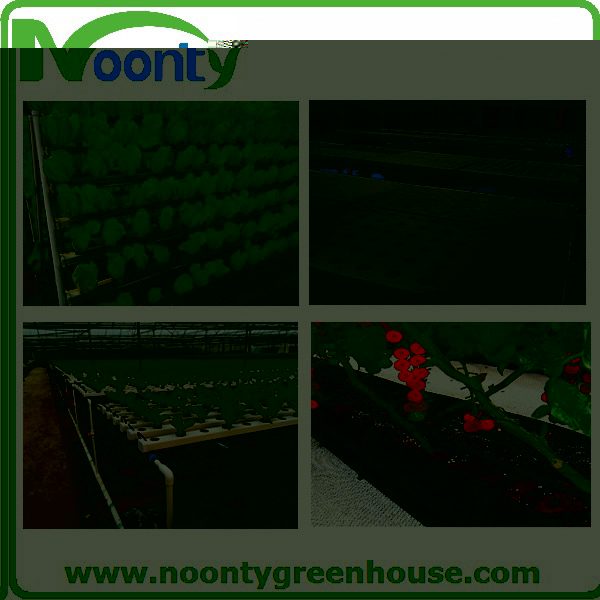
Hydroponics is a method of growing plants using mineral nutrient solutions, in water, without soil. The method can be implemented in places where the soil type is not ideal for the desired crop. In addition, the technique can be used in roof top farming and therefore is very useful in areas with limited space such as urban areas.
Advantages
-
No soil is needed so there is no crop limitation due to soil type, eroded or diseased soils.
-
Water can be recycled so it is advantageous in drought prone areas or deserts.
-
No nutrition waste due to water run-off which in turn can lead to eutrophication.
- Higher and stable yields because the plants does not expend too much energy in finding nutrients in the soil thus this energy is invested into the growth of the plant.Also in soil plants compete with weed for food and water but in hydroponics the adequate nutrients are delivered straight to the roots.”
-
Less frequent occurrence of diseases because of the absence of soil which a bacteria growth media
-
Due to container mobility hydroponics enables the farmer to grow crops near the area of use thus reducing transportation costs.
-
Labor intensive work such as tilling, cultivating, fumigation, and watering is not required for hydroponic farming (Jones, 1997). And as for advanced hydroponics the system is usually automated using pumps or even computers, labor costs will decrease dramatically.
-
The simplified hydroponic technique is easy to understand and does not require any prior knowledge to achieve concrete results.
Disadvantages
-
Although the use of advanced hydroponics is cheaper in the long run, its initial start up cost is rather high as it is expensive to procure the equipment required.
-
The hydroponic conditions (presence of fertilizer and high humidity) create an environment that stimulates salmonella growth.
-
Requires the use of uncontaminated water
Four main types of hydroponic techniques
Nutrient Film technique
It works best with plants that have a long root system. This circulatory system consists of a sloped channel that allows the nutrient water to be continuously pumped in the channel. Plants are suspended are suspended above the solution with their roots dangling into the solution. However it requires constant maintenance as overgrown roots can block the channel and disrupt the whole process. It also requires a constant flow of nutrient solution or else the plant will dry out so the pumps must be very effective.For this reason this method is not advisable for home gardening or developing countries.
Source: Retrieved 1 December 2010 in Basic hydroponics and how they work from http://www.simplyhydro.com/system.htm
Dynamic root floating technique
This non circulatory method can be implemented using simple pumps thus is advisable for developing countries. The pump is not continuously in use but is switched on and off occassionally. The bottom part of the roots dangle in the nutrient solution and specialize in nutrient uptake(nutriroots) whilst the upper part is not in solution and is responsible for oxygen intake(aeroroots).DRFT keeps the temperature constant and so is desirable for tropical and semi-tropical regions of Asia.
“Since oxygen is less soluble in warm water, the DRFT is well-suited for hydroponic farming in tropical and subtropical climates such as those found in Thailand” (Kao, 1991).
Water culture technique
The roots dangle freely in the solution.The problem of root aeration often arises and therefore an air pump is used to supply oxygen.The roots must not however exposed to light as it gives rise to nutrient consuming algae.This technique is ideal for plants that grow fast such as lettuce.
Source: Retrieved 1 December 2010 in Basic hydroponics and how they work from http://www.simplyhydro.com/system.htm
Implementation in developing countries and urban areas.
Advanced hydroponic systems can be intensive and expensive. But simplified hydroponic growing is much simpler and cheaper with low operational and maintenance costs.. Although yields from such systems are lower in comparison to advanced hydroponics the yield still outweighs the regular farming yields. In addition cheap and easily available materials such as fish aquarium tanks, ceramic pots, and aluminum cans can be used.It is also useful in urban areas where there is limited cultivation land.
Simplified hydroponics was developed in the early 1980’s in Colombia.These projects were a success as on average a single garden made a profit of $90 in two to three months with the initial investment being $355. Since 1984, projects have been implemented in 12 Latin American and African countries, mostly funded by the UNDP and the UN FAO.
Costs for building gardens for Asia tropical areas
Of the estimated 790 million people classified as hungry in 2000, 525 million lived in Asian nations (UN FAO, 2000).
This is a rough estimate of what Bradley and Marulanda (2000) estimated would be the cost of setting up a hydroponic garden in Tropical Asia.
The total number of beneficiaries would be 232 million for 50million gardens,each garden accomodating an average family unit of 4.Initial cost of setting up a garden amount to $355 including a year supply of nutrients and seeds.The total cost of implementing this plan in Tropical Asia is 20 billion dollars but it generates a revenue of 135 billion per year.Income from each ranges from $329-1405 per year.
From these statistics it can be seen that implementing such a plan would be beneficial as it is self sustainable. The gardens are not only a source of fresh produce rich in vital nutrients but also a source of income thus the beneficiaries can use the money to send their children to schools and cater for other needs. Because this is an income generating project it can still be carried out even if there are no free funds because the farmers can work with private companies to secure micro loans which will be paid back after the produce is sold.
Although these statistics are based on a large scale implementation plan, this plan can also be effected on a small scale range starting with 20 or so gardens.
The estimated cost of this small scale project X will be about $7600 with the same potential income as stated above from each garden. Profits made from project X can then be used to start another hydroponic project elsewhere whilst Project X continues to grow.
Successful implementation
1.Uruguay
2. Ecuador
Funding
Such a project, if successfully implemented, is self sustainable because it leads to increased yields hence increased profits that are ploughed back to improve the project. Therefore, the project only requires funding for the initial start up, and the FAO is an ideal source. Other potential sources include the country’s government or microloans from other organizations.

